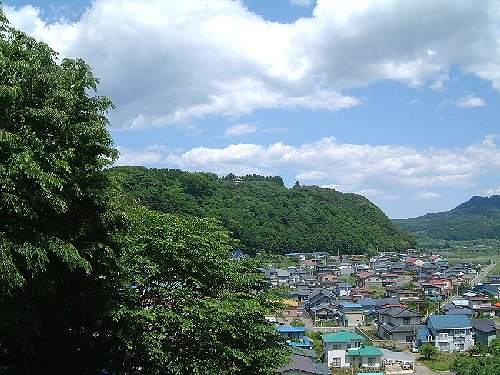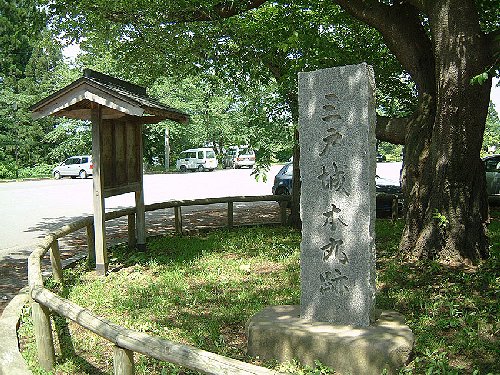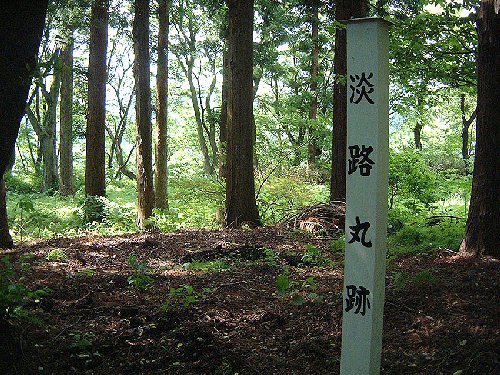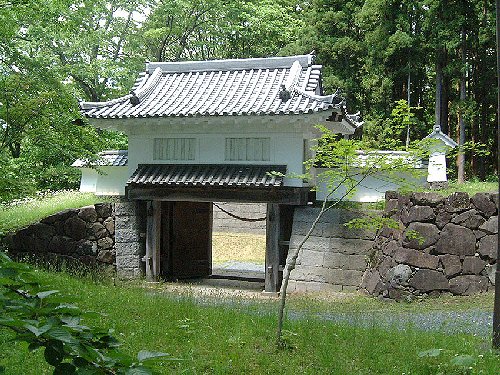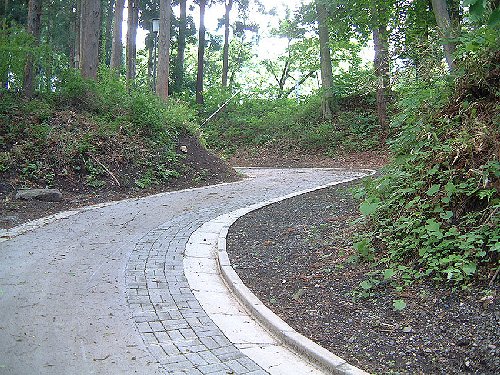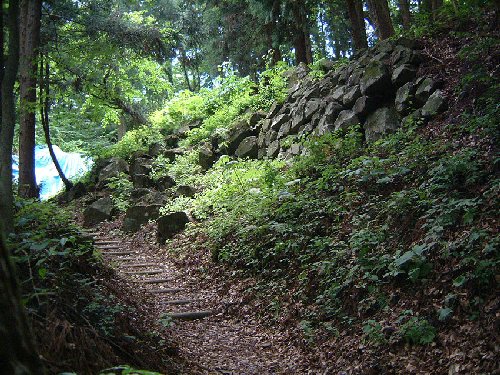place
Ninohe City Fukuoka
Current name
Kuto Castle ruins
Terrain and remains
Located on a river terrace formed on the right bank of the Mabuchi River, it is a large L-shape 500 meters north to south and 750 meters east to west, surrounded by the horseshoe river on the west side, the swan river on the north side, and the Nekosu river on the east side It is done. Each riverbed has a height of up to 20 meters and a cliff with an inclination angle of 45 degrees or more. On the south side is a hollow moat (25 to 40 meters wide) outside the pine round and a hollow moat (40 meters wide and 10 to 12 meters deep) outside the second round.
The river terrace has two steps, and the height of the Sannomaru is about 110 meters, and the Honmaru and Ninomaru are more than 130 meters. It is a huge plain castle with a total area of 34 hectares, with a strong medieval character that makes full use of eroded terrain.
There is an empty moat 10 to 18 meters wide and 3 to 5 meters deep between the Honmaru and Ninomiya, and stone walls remain. On the Ninomaru, a 1.5 to 2 meter earthen wall is built facing the empty moat, and it is connected to the Honmaru by two tiger mouths (ports). The old Oshu Dochu (current prefectural road No. 274 Nitoichi-Ichisen) crosses the Sannomaru, and urbanization is progressing. In the southwest of the castle there is Matsunomaru (current Fukuoka nursery school, Ayaka Inari Shrine, around Anyouji), and while the 26-year-old Mr. Nambu moved from Santo Castle to Morioka Castle, it has been a seven-month residence castle. The
history
Four generations ago, Kuno Hezasane, Mitsumasa, built the castle for the year (1492-1501). Tensho 8 (1580) The 24th generation of Haruka Masayoshi, the owner of the southern part of Sanno, died. Harusame had no prisoner until his last year, and he appointed his family, Tako Nobunao, as his successor, but after the boy (Harutsugu 25) was born, he and Nobunaga It had become. After the death of the clear government, the southern house went over the ruins, and the Shinonori and the well-to-do Kubota group were in conflict. At the age of 13 he passed away at the age of thirteen, and in the midst of confusion, Nobunao succeeded the 26th in the south. Tensei 18 (1590), Toyotomi Hideyoshi started Oshu training after the capture of Odawara Castle. Odawara banishes all members of the Sinseng, but when the commanding forces leave, the remnants are uprising and the situation becomes disturbing.
Political facts are raised in March of the next year by taking advantage of this aircraft. Nobunao is having a hard time, but in September the Oshu reunited army 60,000 horses will arrive in the Mabuchi River basin and will face about 5,000 people who will fortify the castle. The upper army evicts Kusatsu of Kuchinohe Bodhi Temple, honors Masatoshi Masami, and recommends a parliament on the condition of the lifesaving of a female child or a lower-class warrior, who opens the gate with this, but this is a stigma, Kutojo The castle was dropped, and Masami was executed in Sanjo, Miyagi.
Hideyoshi's domestic reunification is complete, Nobunao is encased in the three districts of Waga, Hianuki and Shiwa, and Kutojo Castle will be remodeled into a Toyotomi style castle. Nobunao turned this castle into a Fukuoka Castle and made it a temporary residence before moving to headquarters in Morioka, and died in Qincho 4 (1599) here. After that, the son of Toshio Nao and Toshinao moved Honjo to Morioka around the year 1615-1623, and Fukuoka (Kuchinohe) Castle became an abandoned castle in 1636. It has become a national designated historic site in 1965.
traffic
About 5 minutes by car from Ninohe Station

